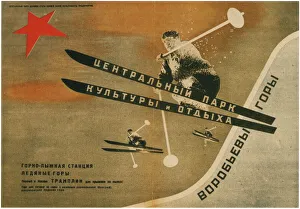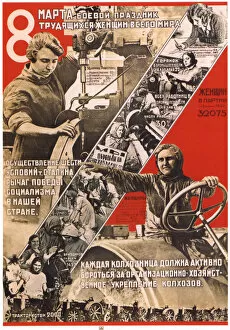Soviet Woman Collection
The Soviet woman, a symbol of strength and determination, emerged as the Worker of the Orient in 1930
All Professionally Made to Order for Quick Shipping
The Soviet woman, a symbol of strength and determination, emerged as the Worker of the Orient in 1930. Joining the ranks of builders of socialism, she defied societal norms and fought against kitchen slavery on the 8th of March - a day that became synonymous with rebellion by working women. In an illustration from "USSR Builds Socialism" by Lissitzky in 1933, her unwavering spirit shines through. Amidst this era of progress, Gorky Central Park of Culture and Leisure stood as a testament to her resilience in 1933. Created by Vogeler, it offered a space where she could unwind after long days at work. Whether she was a collective farmer or worked at the electrical factory Svetlana in Leningrad, her contributions were invaluable. In workshops like those found at Sevkabel Factory, women honed their skills and showcased their expertise. The Women's workshop epitomized their dedication to craftsmanship and innovation. Parades held around 1930 celebrated these remarkable individuals who embodied strength and unity. Magaziner's artwork captured their vibrant energy as they marched forward towards progress. Recognizing their achievements, badges like "Ready for Labour and Defence of the USSR (GTO)" were awarded to exemplary Soviet women during the 1930s. These accolades highlighted their commitment to building a better future for all. Throughout history, shock workers have always been revered for going above and beyond expectations. In 1932, one such exceptional individual exemplified what it meant to be dedicated to her craft - pushing boundaries while inspiring others along the way. The Soviet woman represented more than just an ideal; she was an embodiment of hope for equality and progress within society itself. With each passing year came new opportunities for growth - both personally and professionally - allowing these extraordinary women to shape history with every step they took towards liberation.
















